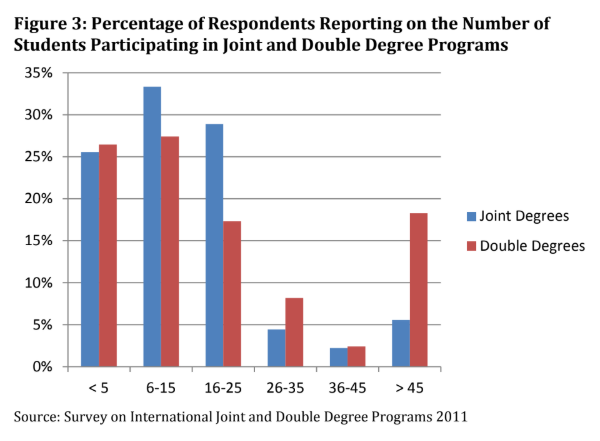Areas of Practice
Short Programs
Our core expertise is in collaborative short program where students from home country have the opportunity to take a course or a semester at a Partner university either for credit or for certificate of completion. The short programs spanning from weeks to months greatly aid in student experience and also in employablity.
However while short courses are a niche, a growing area that this can eventually move into is the space of collaborative Degree Programs. Presently the Joint degree programs as a proportion to the universal set of collaborative program is low. We believe this will become much more expanded in the future.
Joint and Double Degree Programs in the Global Context: Report on an International Survey. By Daniel Obst, Matthias Kuder, and Clare Banks
Double degree programs appear to be much more common than joint degree programs. 84 percent of respondents offer double degree programs while only 33 percent offer joint degree programs. Among respondents, the top countries with joint degree programs are France, Germany, the United States, Italy, and Australia.
Joint and Double Degree Programs in the Global Context: Report on an International Survey. By Daniel Obst, Matthias Kuder, and Clare Banks
The same top five countries for joint degree programs are also the top five countries with double degree programs, though in a slightly different ranking order: the United States, Germany, France, Italy, and Australia.
Joint and Double Degree Programs in the Global Context: Report on an International Survey. By Daniel Obst, Matthias Kuder, and Clare Banks
Four of the top reporting countries offer the majority of their joint or double degree programs at the master’s level: France (81 percent), Italy (58 percent), Germany (44 percent), and the UK (43 percent). Notably, Australia and the U.S. diverge from this trend, with the majority of Australia’s institutions (55 percent) indicating that they offered joint or double degree programs at the doctoral level, and 50 percent of U.S. institutions offering programs at the undergraduate level.
Joint and Double Degree Programs in the Global Context: Report on an International Survey. By Daniel Obst, Matthias Kuder, and Clare Banks
Joint and Double Degree Programs in the Global Context: Report on an International Survey. By Daniel Obst, Matthias Kuder, and Clare Banks
This suggests that, while the average collaborative degree program will engage 25 or fewer students, double degree programs seem to be more successful in attracting a greater number of participants. And it all starts with collaborative Short programs.
Articulated Programs
The world of articulated programs is one that allows cross-border programs between educational institutions where students start their programs in one part of the world and finish in the other part of the world. Typically arrangements of these articulated programs are 2+2 in the Bachelors level and 1+1 in the Masters programs.
There have been a number of international articulation agreements established and implemented across the U.S. In recent years, international students have been admitted through this arrangement and have spent at least two years in the institution.
Developing a process for international articulation agreements in UAA. By Douglas Baye
Recruitment Partnership management
To ensure Universities and colleges thrive and provide the most optimal environment for students, faculty and administrators to prosper, they rely on the support provided by AEB. The world’s leading and most globally ambitious institutions choose AEB to support them with their international strategy, global operations, research and partnership agendas, student success and alumni welfare, compliance management and risk mitigation and their many other diverse and critical needs, enabling them to fulfill their mission. One such area is with International Branch Campuses (IBC).
International Branch Campuses, Trends and Developments, 2016. By Richard Garrett, Kevin Kinser, Jason E. Lane, Rachael Merola
The number of IBCs opened over the past twenty years—since 1996—shows an increase in the latter half of the time period. From 1996-2005, there were 81 openings, while from 2006-2015 there were 133 openings.
International Branch Campuses, Trends and Developments, 2016. By Richard Garrett, Kevin Kinser, Jason E. Lane, Rachael Merola
When analyzing growth in absolute terms, we see that the US and UK have accelerated IBC growth, having founded 37 and 31 IBCs from 2005-2015, respectively, whereas Russia, France, and Australia have grown IBC volume at a more modest pace.
International Branch Campuses, Trends and Developments, 2016. By Richard Garrett, Kevin Kinser, Jason E. Lane, Rachael Merola









